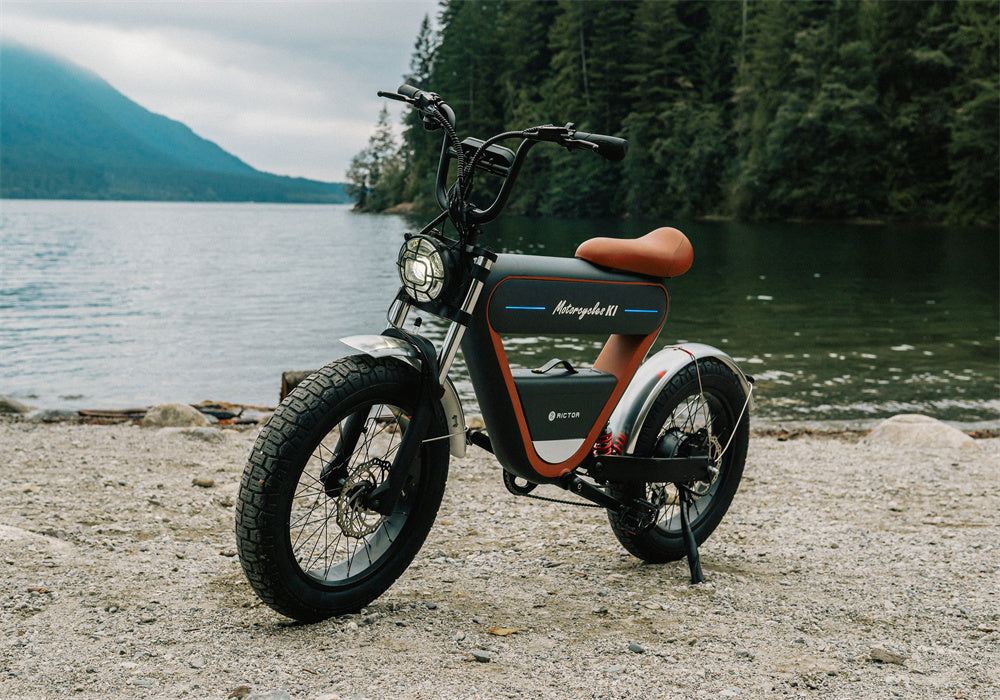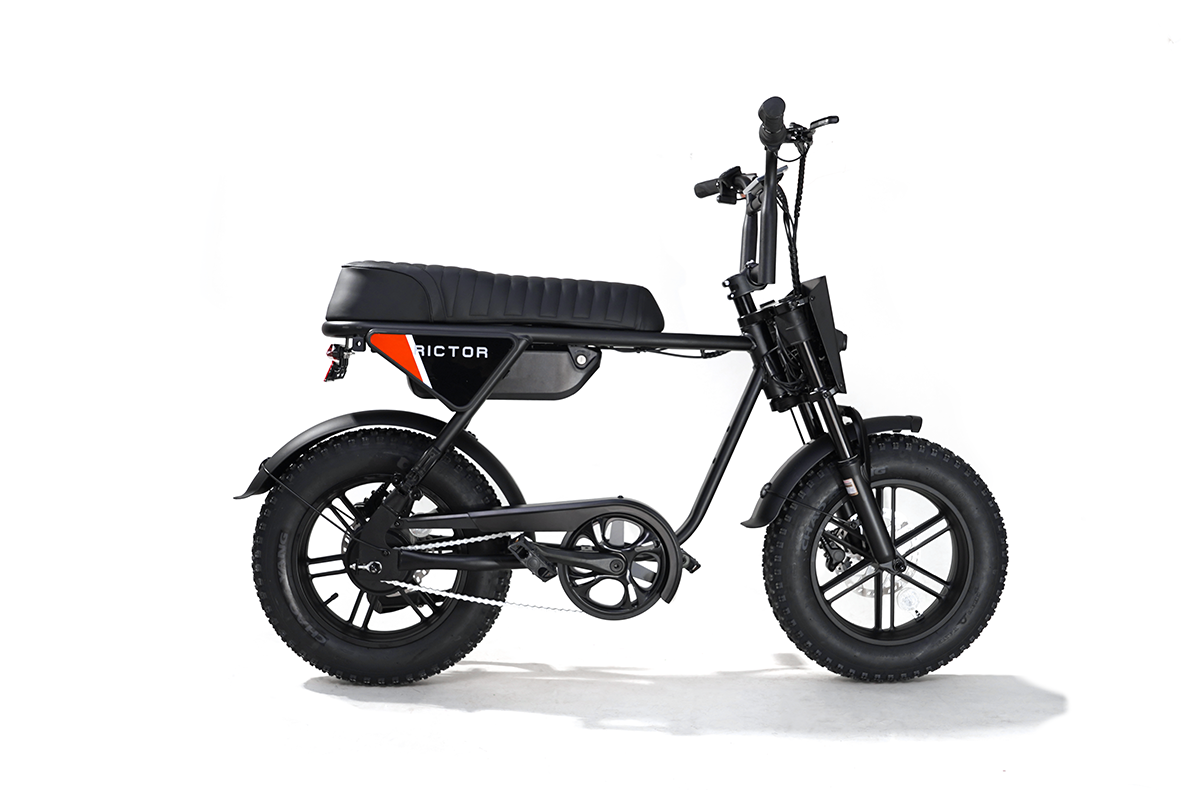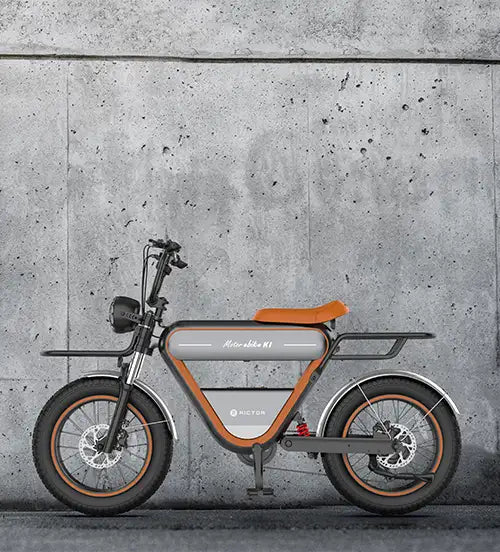
Types of E-Bike Sensors: Everything You Need to Know for an Enhanced Ride
One of the key features that set e-bikes apart from traditional bicycles is the integration of various sensors that optimize performance, safety, and the overall riding experience. These sensors play an essential role in controlling motor assistance, adjusting braking power, monitoring battery life, and ensuring a smooth ride in various conditions. In this blog post, we’ll dive into the different types of e-bike sensors, explain their functions, and highlight how they contribute to a more enjoyable and safer riding experience.
Main Types of E-Bike Sensors
Pedal Assist Sensor (PAS Sensor)
Pedal Assist Sensors (PAS) are a fundamental feature in most e-bikes. These sensors detect when the rider is pedaling and signal the motor to provide assistance. The amount of assistance provided is directly related to the pedaling speed.
How it Works
The PAS sensor works by detecting the rotation of the pedals or crankset. It signals the motor to provide power based on the rider’s pedaling speed. This allows for a more natural cycling experience, as the motor activates automatically when the rider begins pedaling.
Key Benefits
-
Hands-Free Assistance: Riders don’t need to manually control the motor; the system automatically adjusts motor power as you pedal.
-
Energy Efficiency: PAS sensors are designed to ensure that the motor only provides the necessary assistance, making it energy-efficient.
Location
Typically mounted on the bottom bracket or the crank area of the bike.
2. Torque Sensor
Unlike the PAS sensor, which focuses on pedaling speed, the torque sensor measures the force the rider applies to the pedals. This allows the motor to provide proportional assistance based on how hard the rider is pedaling, offering a more dynamic and responsive experience.
How it Works
The torque sensor detects the amount of force exerted on the pedals. When the rider applies more force, the motor responds by providing more assistance. This creates a more natural riding experience, particularly on uneven terrain or when going uphill.
Key Benefits
-
Proportional Assistance: Provides a smoother and more intuitive ride, as motor output is directly related to the rider’s effort.
-
More Control: Ideal for riders who want greater control over their motor assistance, especially on challenging trails or inclines.
Location
Typically located on the bottom bracket or crankset.
SEE ALSO Pedal Assist vs. Throttle E-Bikes: How Do They Differ?
3. Speed Sensor
The speed sensor monitors the speed of the e-bike, helping to regulate motor output and ensuring that the motor stops providing assistance once the legal speed limit is reached.
How it Works
Speed sensors measure the speed of the bike, often via a magnet on the wheel spoke or rotor mount. The motor will cut off or reduce its assistance when the bike reaches the preset speed limit (e.g., 25 km/h or 15.5 mph).
Key Benefits
-
Legal Compliance: Ensures that the e-bike stays within legal speed limits.
-
Safety: Helps prevent the motor from providing excess power at high speeds, contributing to a safer ride.
Location
The speed sensor is usually positioned on the wheel hub or frame near the wheel.
4. Cadence Sensor
Cadence sensors detect the rotational speed of the pedals, allowing the motor to engage when pedaling begins and stop when the rider stops pedaling. This sensor is similar to the PAS sensor but focuses on the rotational speed rather than the force applied.
How it Works
Cadence sensors are triggered when the rider starts pedaling, sending a signal to the motor to provide assistance. Once pedaling stops, the motor ceases to assist. It’s a simple but effective sensor.
Key Benefits
-
Simplicity and Cost-Effectiveness: Cadence sensors are less expensive than torque sensors, making them a great option for riders who don’t require advanced features.
-
Seamless Operation: The motor starts and stops automatically as the rider pedals, creating a smooth riding experience.
Location
Usually mounted on the crank or pedal area.
5. Brake Sensors
Brake sensors are safety features designed to stop the motor from providing assistance when the rider applies the brakes. This prevents the motor from working against the braking force, enhancing safety during descents or quick stops.
How it Works
Brake sensors detect when the rider applies the brakes and send a signal to the motor to immediately cut off power. This is especially important for maintaining control in urban environments or when riding downhill.
Key Benefits
-
Improved Safety: Ensures that the motor doesn’t continue to push the bike forward when the rider needs to stop.
-
Throttle Control: Helps prevent unintended acceleration when braking, particularly in emergency situations.
Location
Brake sensors are typically integrated into brake levers or added as separate magnetic or sensor units on brake cables or calipers.
6. Throttle Sensor
Throttle sensors allow riders to control the motor power independently of pedaling. Throttle sensors are commonly used in conjunction with PAS or torque sensors to provide additional control over motor assistance.
How it Works
The throttle sensor monitors input from the rider’s throttle (e.g., finger, thumb, or twist throttle) and adjusts motor output accordingly. This allows the rider to control the motor without having to pedal.
Key Benefits
-
Manual Control: Perfect for riders who want to engage the motor without pedaling.
-
Versatile Riding: Great for urban commuting where pedaling may not always be necessary.
Location
Throttle sensors are generally located near the handlebars, where the rider can easily control the throttle.
Additional Specialized Sensors
7. Battery Level Sensor
The battery level sensor monitors the e-bike’s battery charge status, providing real-time feedback to the rider. This helps riders manage their range and avoid running out of power mid-ride.
Key Benefits
-
Real-Time Monitoring: Allows the rider to see the battery’s charge status at a glance.
-
Range Management: Helps plan rides and optimize energy use.
8. Temperature Sensor
Temperature sensors are designed to monitor the temperature of key components, particularly the battery, to prevent overheating and ensure optimal performance.
Key Benefits
-
Overheating Protection: Protects the battery and motor from excessive heat, which can degrade their lifespan.
-
Safety: Prevents potential overheating issues that could lead to safety concerns.
9. Gyroscopes and Accelerometers
These sensors measure acceleration and provide data for advanced stability control, helping to keep the e-bike balanced during the ride, especially on rough or uneven terrain.
Key Benefits
-
Enhanced Stability: Helps the bike adjust to terrain changes and maintain balance.
-
Advanced Ride Features: Used for features like anti-lock braking systems (ABS) and stability control.
10. GPS and Navigation Sensors
GPS sensors track the rider’s location, speed, altitude, and route data. Some e-bikes come equipped with GPS sensors that provide offline map support for easier navigation.
Key Benefits
-
Route Planning: Helps riders plan their routes and navigate unfamiliar areas.
-
Location Tracking: Useful for tracking trips and for security purposes in case of theft.
11. Pressure Sensors
Pressure sensors monitor tire pressure and ensure optimal grip and safety. They can also be used to monitor suspension system performance for added comfort.
Key Benefits
-
Safety: Alerts riders to low tire pressure, which can affect handling and stability.
-
Comfort: Ensures the suspension system is performing correctly for a smoother ride.
12. Optical and Light Sensors
Optical and light sensors adjust the brightness of the bike’s lights based on ambient lighting conditions. This ensures maximum visibility in both daylight and low-light situations.
Key Benefits
-
Improved Visibility: Enhances safety by automatically adjusting lighting for changing conditions.
-
Hands-Free Operation: Riders don’t need to manually adjust lights.
13. Proximity Sensors
Proximity sensors detect objects or obstacles near the e-bike and trigger warnings or automatic braking to prevent collisions.
Key Benefits
-
Collision Prevention: Helps prevent accidents in crowded urban areas or on busy streets.
-
Increased Safety: Offers an additional layer of safety for urban riders.
Conclusion
E-bike sensors are essential to providing a smooth, safe, and efficient riding experience. From pedal assist and torque sensors to brake, speed, and GPS sensors, each plays a crucial role in enhancing performance and ensuring safety. Understanding the types of sensors available will help you choose the right e-bike for your needs and ensure you make the most of your ride.
FAQs
What is the difference between PAS and torque sensors?
PAS sensors detect pedal speed and adjust motor power based on pedaling cadence, while torque sensors measure the force applied to the pedals and provide proportional assistance.
Do e-bikes need speed sensors?
Yes, speed sensors help regulate the motor output and ensure compliance with legal speed limits, preventing the motor from assisting when the speed exceeds the legal threshold.
Can I control my e-bike motor without pedaling?
Yes, throttle sensors allow you to control the motor’s power independently of pedaling, making them ideal for urban environments or when you don’t want to pedal.
💡 Explore More Here!
- EBike Noise: Identifying Sources and Solution
- E-Bike Battery Maintenance: What Every Rider Needs to Know
- How long do e-bike batteries last on one charge
- Top Mid-Drive eBike Conversion Kits: Your Easy Guide to Choosing the Best One
- Choosing the Right Electric Bike: Step Thru vs Step Over Frame Design





